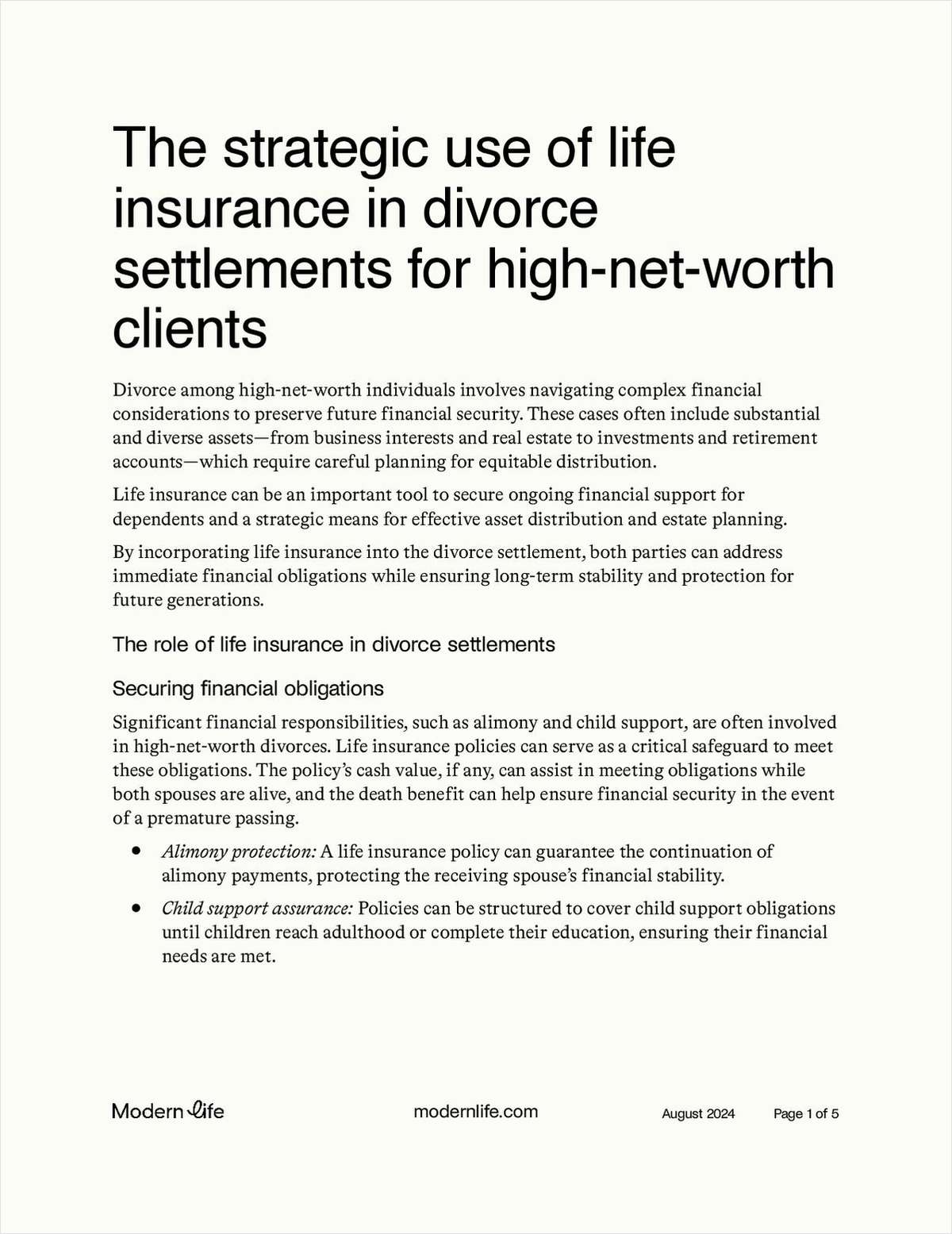In last month's article ("Eureka!," Investment Advisor October 2006 cover story)–we discussed the benefits of mining the data in clients' 1040s in an effort to better understand them and to help you provide appropriate investment solutions. To recap what we covered last month, every line of a 1040 corresponds to a life event, each of which can represent an opportunity for you. Understanding the "why" and "what" of each line can help you gain insights into your clients' past, present and future financial behaviors. This in turn will lead to a better understanding of clients' investing and buying decisions, their specific issues and needs, and how they like to be serviced in order to deepen relationships.
While last month we concentrated on how to deliver wealth management solutions, we will now take a look at the other key opportunities that could help build your business success.
As advisors review their clients' tax returns they should consider the SARI concept. SARI is the ability to:
- Deliver wealth management Solutions
- Uncover hidden Assets
- Gain Referral opportunities
- Network with centers of Influence
Uncovering Hidden Assets
When you think about the concept of "hidden assets," keep in mind that these are currently only hidden to you, not to your clients. To uncover these assets, which are ones you are not currently managing, you will need to think like an IRS auditor. To begin, you can simply look at clients' home addresses, incomes, and itemized deductions. Ask yourself does it all add up?
Does the client's lifestyle seem greater than his income? Does the amount indicated make sense? If yes, how is he financing it? Is it from a trust? Gifts? An inheritance? Settlements or cash business?
Then the follow-up question to consider is: Are there underlying assets that are available for management?
Alternatively, the same information will allow you to see whether a client's lifestyle seems to be below her income level? If yes, where is that excess going? Maybe this income level is new to her? Could there be a greater number of assets to manage in the future?
After looking at the client's 1040, line 45, which indicates that an alternative minimum tax was due, ask yourself why this occurred? Look for the detail on Form 6251 (alternative minimum tax–individuals) to see if it was a result of an incentive stock option exercise. Why did they exercise those options? Perhaps they are getting ready to leave their jobs? Maybe they are planning on a large purchase that could have been better handled through a customized credit solution?
What about AMT?
Very importantly, does line 45 represent a life event that could free up assets? Perusing the 1040 further should provide additional information on key life events. For example, line 67, excess social security tax, usually indicates that the taxpayer has changed jobs in mid-year. If that is the case for some of your clients, could there be 401(k) assets held at their former employers? Have their benefits changed, providing an opportunity to discuss life, disability or long-term care insurance? Will their incomes be increasing because of a new position? Can you manage this potential excess?
Now take a look at Schedule B, income-producing investments. What asset base does it take to generate this type of income? For example, the average dividend yield for the S&P 500 Index is 1.9%. If your client has $10,000 in dividend income, as shown on line 9b of the 1040, are you managing the portfolio to support that?
On Schedule A (for itemized deductions) look at line 13, which represents investment interest. Are you aware of any margin loans? If not, where are those assets?
If you look at line 22 of Schedule A (miscellaneous itemized deductions), you will find investment advisor fees. Are fees from other advisors comparable to what you charge the client? If not, why not? What assets are generating that fee and are these available to you?
Then go down to line 27 of Schedule A (other miscellaneous deductions). Is there a deduction for IRD (income in respect of a decedent)? Generally, this deduction indicates an inheritance. Has your client inherited an IRA? If you were unaware of that inheritance, this would be an opportunity to make recommendations to your client on how to handle the IRA.

In addition to uncovering hidden assets to invest, think about the other services your firm offers. For example, look at Schedule A, line 10 (home mortgage interest). Could the client be a candidate for refinancing? If Schedule B (interest and dividends report) shows a lot of interest income, could it be that they are saving for a large purchase? Can you work with them on any lending opportunities?
If line 39 on the Form 1040 is checked, that means that the client is over age 65. By age 65, many people have grandchildren. Have you spoken to these clients about 529 savings plans? Furthermore, have you discussed your wealth transfer services with them?
These so-called hidden assets are all there for the finding. You don't need to be a tax specialist to uncover these treasures. It only takes simple initiation–ask your clients for their current returns to begin the hunt.



